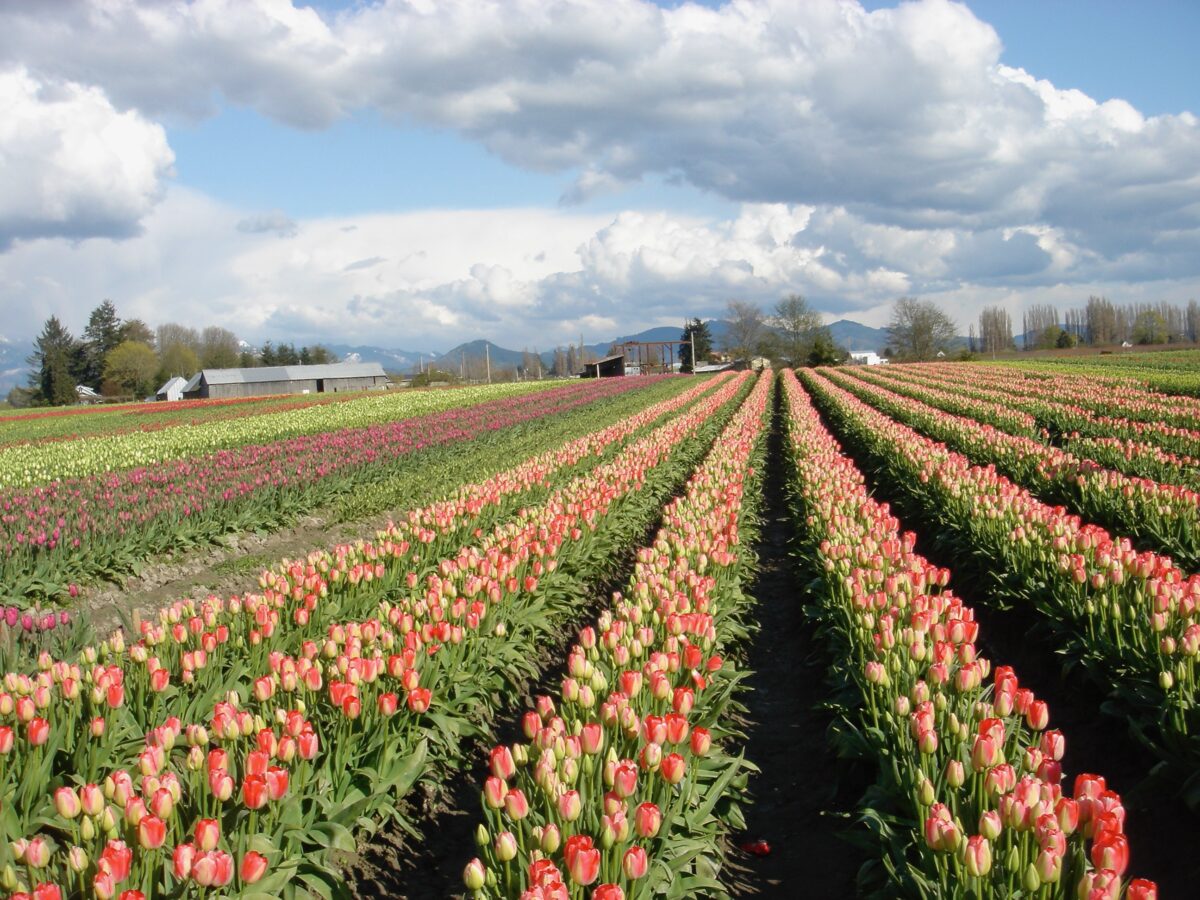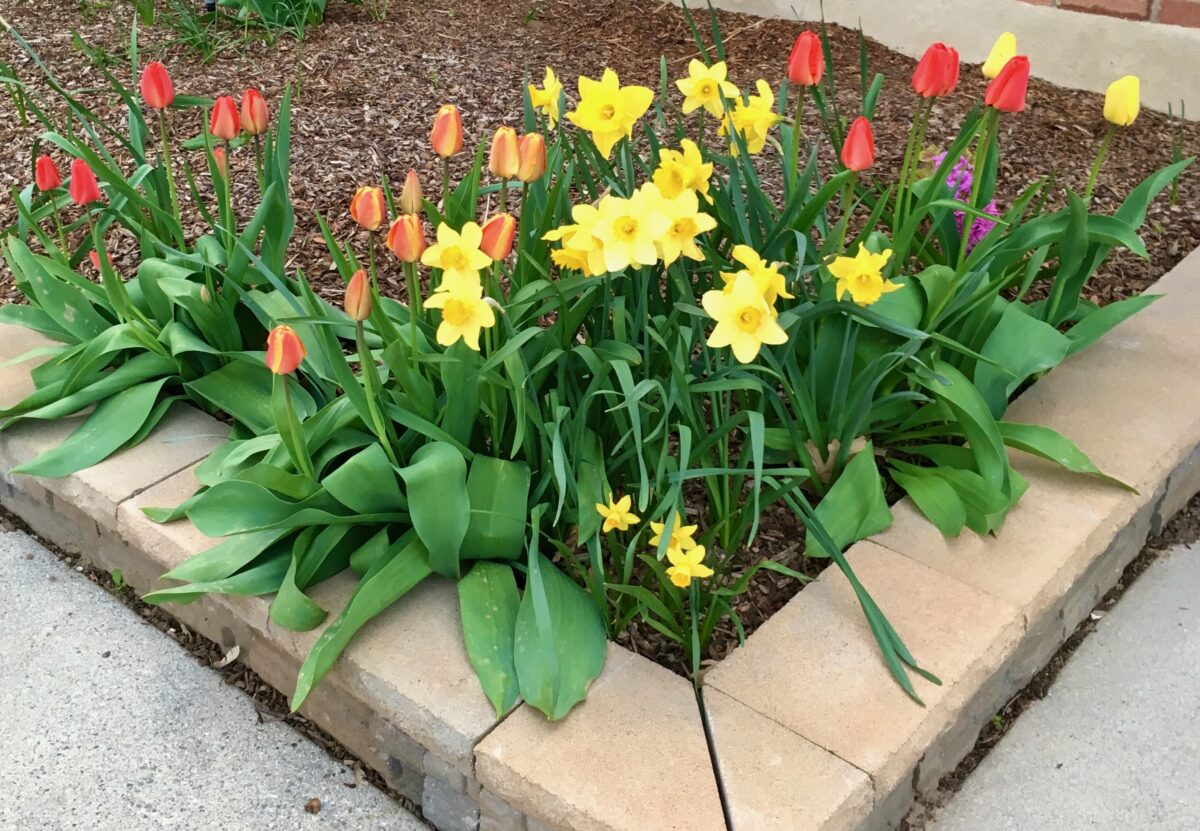Garden Help Desk: How can I keep my tulips safe for the winter?
- Tulips are one of the most popular springtime flowers.
- Bulb producers work hard to provide gardeners with healthy bulbs that will thrive and produce beautiful blooms if they’re planted in the right place at the right time and given good care.
- Spring-blooming bulbs do well when they’re planted wherever there is plenty of sunshine and good soil drainage.
- Daffodils are planted for their bright, early season blooms.

Courtesy Meredith Seaver
Tulips are one of the most popular springtime flowers.
I’m pretty sure you already know my question! Here it is, however, “How do I care for my tulip bulbs that I didn’t get planted this fall? What is the best way to winter them over until spring?”
Obviously, the ideal is to plant your bulbs in September or October, but lots of gardeners have been in your situation (more than once). Good intentions get derailed by unexpected complications in the weather or the schedule. There are a few possible solutions to your problem, depending on your location in the county.
If the soil in your planting area isn’t frozen, you can go ahead and plant them. If the soil is below about 40 degrees there won’t be much, if any, root growth now, but you should see some eventual blooms in the spring.
Or you can plant them in containers, water them in and then set the containers out in the landscape in an area where there won’t be any standing water from rain or snowmelt drainage. You can make a mound of soil pep, small bark nuggets, compost, or something similar around the containers to insulate them a bit.
Another option- store the bulbs in a cold (but not freezing) location like a refrigerator or cold garage. That will give the bulbs the chilling hours they need. Then plant them in the spring when the soil thaws. Make sure there won’t be any condensation collecting on the bulbs during storage, as moisture can cause spoilage. Check the bulbs occasionally and remove any that show signs of decay.

Courtesy Meredith Seaver
Bulb producers work hard to provide gardeners with healthy bulbs that will thrive and produce beautiful blooms if they're planted in the right place at the right time and given good care.
I want to buy a fir tree at a local nursery and use it for a Christmas tree before I plant it in my yard. Do you have any tips for me?
The most important part of having a living Christmas tree is selecting a tree species that is the best choice for your landscape. Since you’ll be bringing it indoors, you’ll also need to choose a tree that fits into your home and can be handled by only one or two people.
You can do your tree a favor by preparing the planting hole ahead of time. If you have some large boxes or containers for the soil from the hole you can store it in your garage or tucked up against your home so that it won’t be frozen when you’re ready to plant after Christmas.
Limit the number of days that your tree is indoors; plan on about 10 days at most and keep your tree in a protected area outdoors, with no standing water under the tree, until you’re ready to bring it in. Water thoroughly when the upper two inches of soil feel dry then wait to water again until the top few inches have dried.
Provide the best conditions you can once you bring your tree inside:
- Keep the room as cool as you comfortably can.
- Avoid placing your tree near a heat register. If that is your only option, close the register so that dry indoor air doesn’t blow against your tree.
- Also avoid locations near a fireplace, wood stove or space heater.
- Protect your flooring so that you can water your tree while it’s indoors.

Courtesy Meredith Seaver
Spring-blooming bulbs do well when they're planted wherever there is plenty of sunshine and good soil drainage.
Water your tree as needed once you take it back outdoors. If you prepared a planning hole for your tree when you first purchased it, you can plant your tree as soon as you take it back outside. Whether you prepare the hole when you purchase or after you take back out after Christmas day, make sure the hole you dig is at least twice as wide as the root ball of your tree, but no deeper. Backfill with the same soil that you took out of the planting hole, water it in well and cover the planting area with a 3-inch layer of bark mulch.
If you haven’t prepared a planting place and the ground is too frozen for digging, you’ll want to return your tree to that protected place and keep an eye on soil moisture in the container. You might also want to provide the root ball with a little extra protection by putting a pile of bark mulch or bags of compost around the container.

Daffodils are planted for their bright, early season blooms.






